It’s that time of year again: Monarch butterflies, Danaus plexippus, are migrating through Texas on their way to winter in Mexico. And what nectar delights do they partake of in their nutritional pit-stops? Many blooming things, but they prefer sipping from native flowers and high on a list of favorites is the Gregg’s Mistflower, Conoclinium greggii.
As part of the 2015 celebratory edition of Texas Native Plant Week, let’s take A Seasonal Look at this gorgeous native ground cover–friend to gardener and pollinator alike.
It’s October and even in my part-shade garden, the Gregg’s Mistflower blooms up in fuzzy, lavender-blue gorgeousness.
Mid-September through Mid-November hosts the peak flowering for this tough and lovely native Texas-to-Arizona plant. In its native range, Gregg’s Mistflower is perennial and acts as a ground cover in the garden, reaching a height of only about 12 inches during its blooming period and spreading to cover as much or little space as the gardener will tolerate or encourage.
A member of the Asteraceae family, the flowers are gorgeous, showy,
…and unusual. Additionally, they are constantly visited by many a pollinating critter.
Along with Monarchs,
…the Queen butterfly, Danaus gilippus, prefers Gregg’s Mistflower over other nectar choices.
I planted my G. Mistflower group from passed along sprigs with healthy roots attached, and have, in turned, gifted to other enthralled gardeners seeking beauty in botanic and pollinator form. The flowers are what most gardeners prize the Gregg’s for, but it is generally a no-fuss plant–it carries no disease problems and is a water-wise addition to any Texas-tough garden.
Once its flowering has peaked, the fuzzy blooms fade to a tawny beige.
I find the spent blooms quite attractive and I have witnessed finches sneaking snacks from the seed heads.
After the first hard freeze and subsequent foliage drop, the color of the spent blooms lighten just a bit.
Through December and January, the seed heads become more fragile and begin dispersal. I’ve never experienced Gregg’s Mistflower re-seeding into other parts of my garden, or elsewhere for that matter. In my garden it spreads primarily by the roots in the immediate vicinity of the mother plant. Due to lazy-gardener syndrome, I usually leave the thin and fragile remains of Gregg’s Mistflower, seed heads and stems, mingling with the fallen foliage from deciduous trees through the course of winter.
I become serious about clean-up only upon arrival of the first spring growth.
Since Gregg’s Mistflower is dormant during winter, you might want to plant companions of non-native, but evergreen Iris, or native and evergreen Cedar Sage, Salvia roemeriana, Lyre-leaf Sage, Salvia lyrata, or Gulf Coast Penstemon, Penstemon tenuis–all which are spring bloomers–allowing for seasonal interest when Mistflower is dormant. Additionally, by planting evergreens along the edges where you want to limit the spread of Gregg’s Mistflower, you can give a sense of structure to the garden.
Once the warmer temperatures return and spring growth is well-underway, Gregg’s Mistflower grows quickly–adding plenty of filler foliage to augment spring’s beauty. It is a plant that requires some tidying around the edges so that it doesn’t insinuate itself too much out of its desired range, but is easily controlled by simply weeding out the wayward growth and passing along to other native plants gardeners!
The foliage is a stunning bright green and is lobed, or palmate, in shape.
Its other common names (aside from Gregg’s Mistflower) pay homage to the palmate foliage. Names like Palm-leaf Mistflower, Palm-leaf Thoroughwort, Purple Palmleaf Mistflower, Purple Palm Leaf Eupatorium are certainly descriptive, though I’m personally fond of the “Gregg’s”. Named after Josiah Gregg , who was one of the 19th century naturalists who traveled throughout Texas and catalogued plants (and other things as well), Gregg’s Mistflower is one of many plants named in his honor.
Gregg’s returns from dormancy rapidly and usually there are smatterings of blooms during spring and summer, but the real flower-power show begins in August, picking up blooming steam during September and October, with a slacking off as November strolls through the garden.
So pretty.
Gregg’s Mistflower is not only an excellent pollinator plant, but also the host plant for the Rawson’s Metalmark Butterfly, Calephelis rawsoni.
Gregg’s Mistflower grow and bloom best in full to part sun, but will take shade. In a garden that I once managed at Zilker Botanical Garden, one group of Gregg’s Mistflower grew in light shade–it received no direct sun throughout the day. The foliage was lanky, but still attractive, and the blooms appeared, less abundantly, but on schedule during the autumn months, just like its brethren growing in more sun. In decent soil, this hardy plant only takes about two years to cover a 4×4 foot area. With rockier soil or a shadier spot, the Gregg’s Mistflower covers a similar patch more slowly.
If you enjoy (snort!) deer visiting your garden, be aware that they’re likely to nibble your Mistflower, so if you can grow it in a spot where the ungulate beasties can’t get to the plant, you’ll be a satisfied gardener, even if you’re frustrating your deer visitors
Gregg’s Mistflower, Conoclinium greggii, is a plant that works in any Texas garden, sun or shade, rocky or clayey, formal or casual, and is coveted by pollinators and gardeners.
In Spring,
Summer,
Autumn,
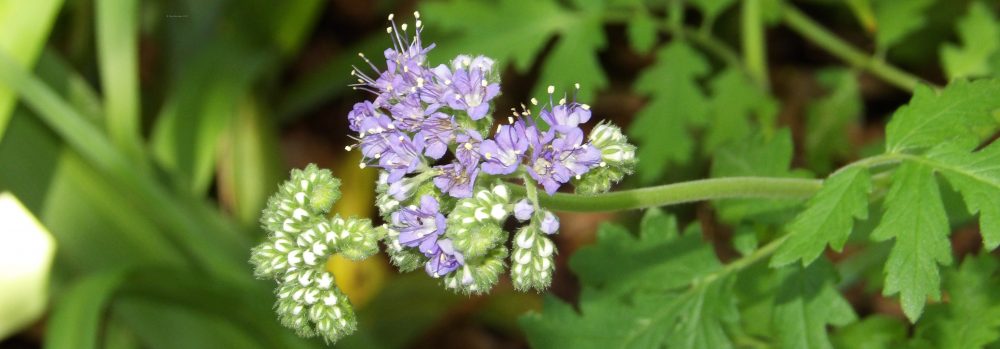

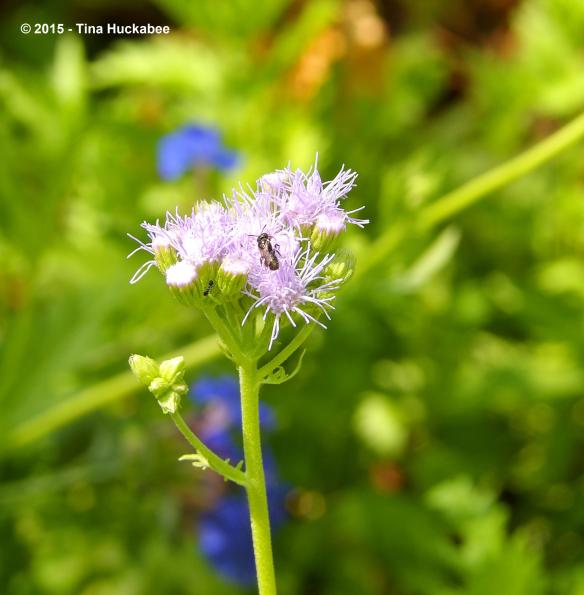

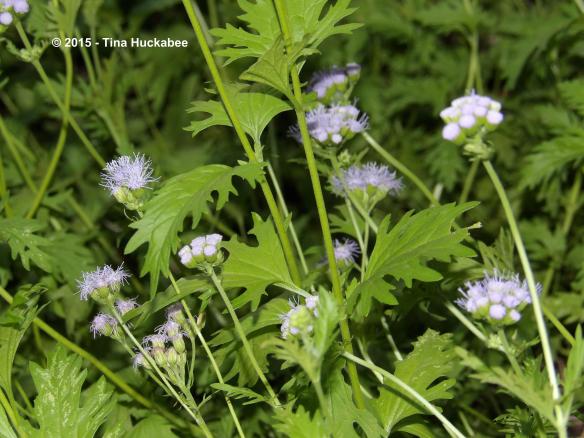

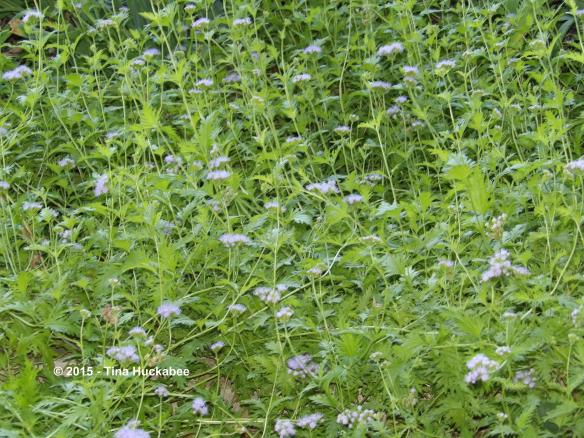


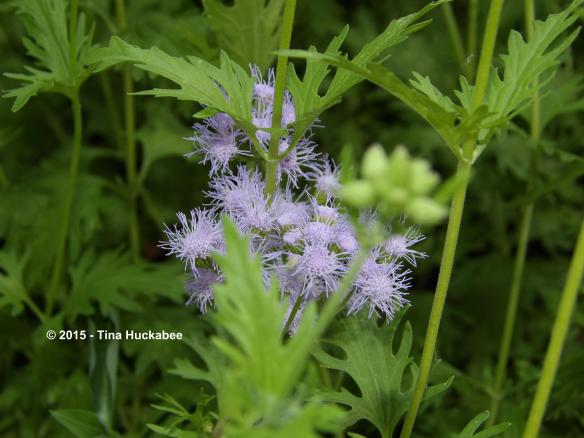
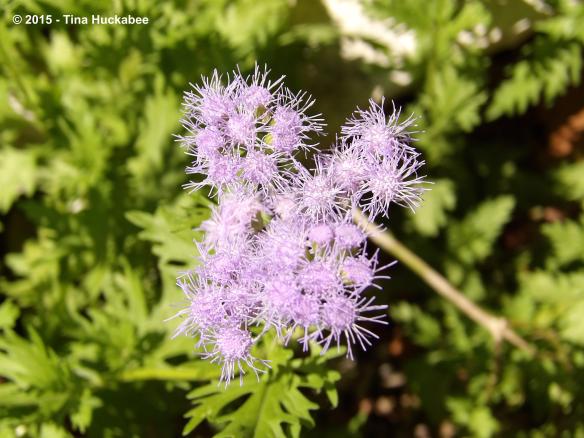





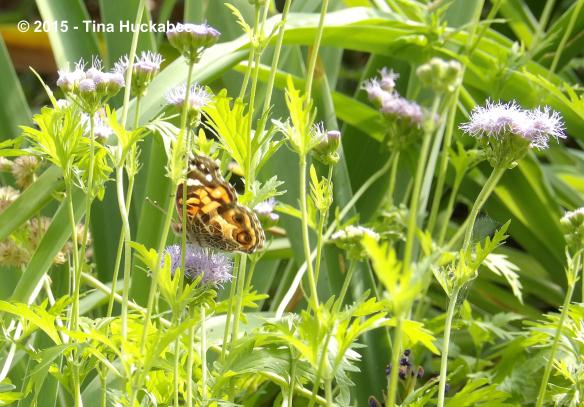

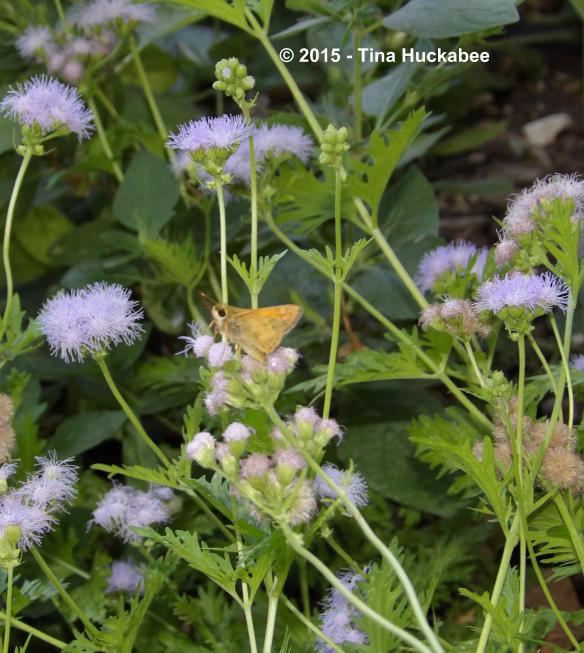
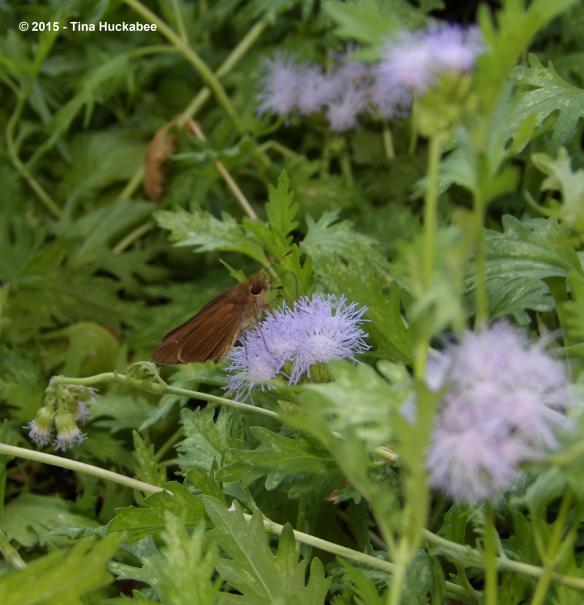
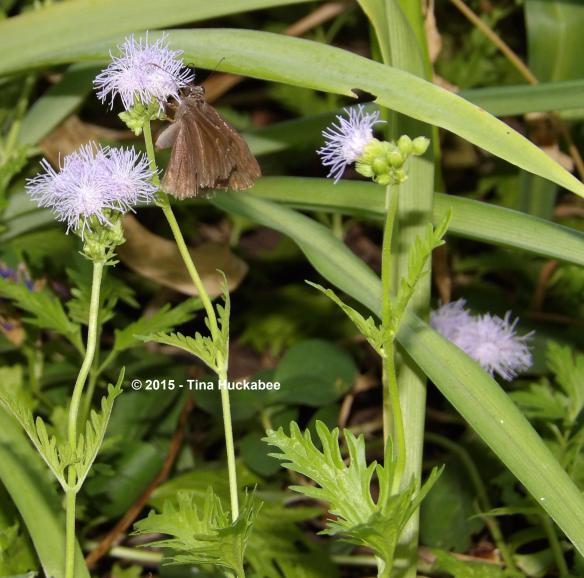







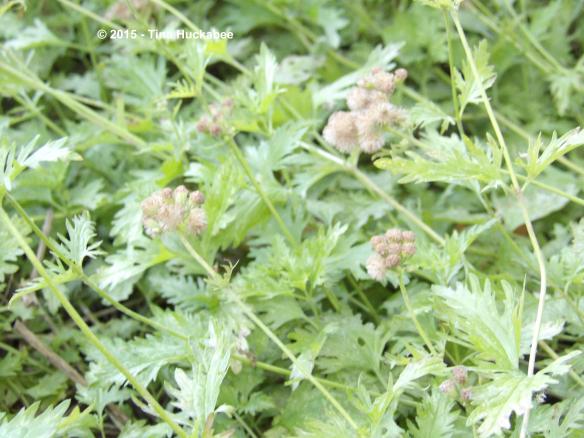

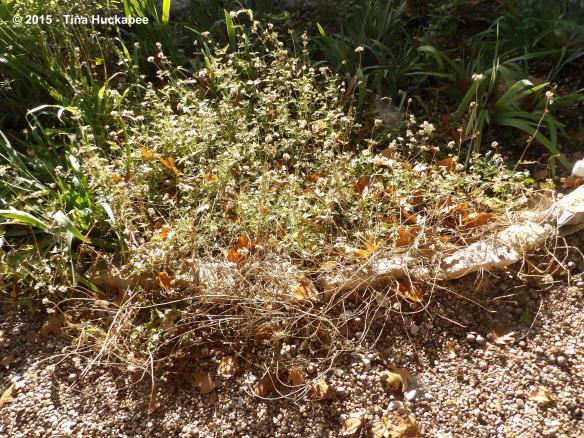



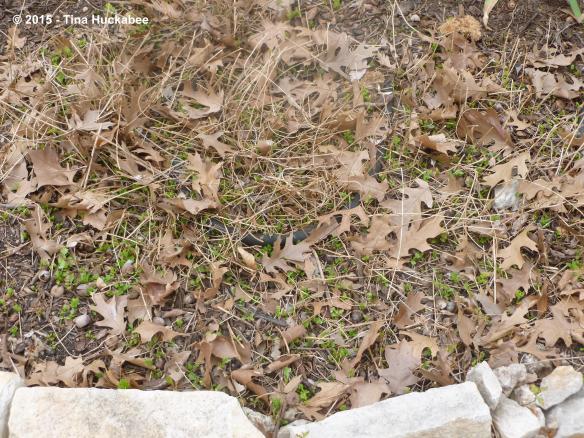
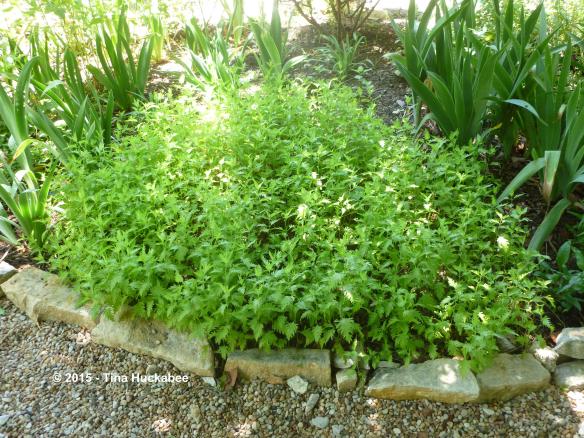

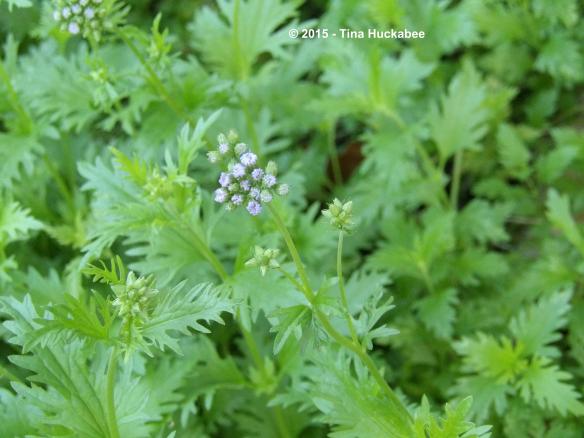



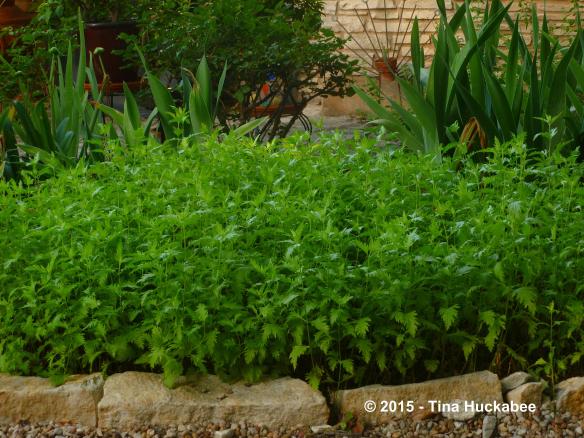





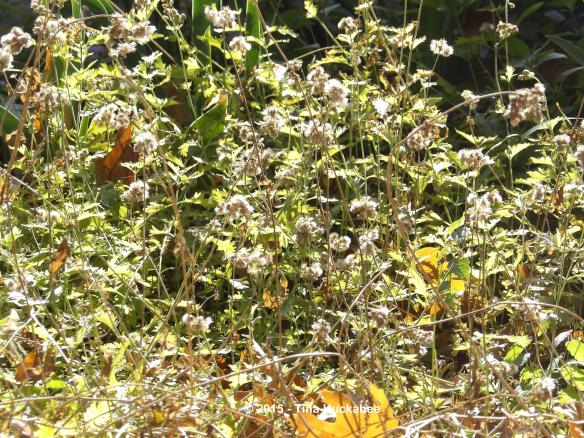

I am completely head over heels with this Dr. Seussian flowering plant. It is new to my spaces so I haven’t yet calculated what else might be needed to add as companion plants aside from bulbs (hopefully undisturbed) already in proximity. I’m hoping to get a good stand of poppy plants going and according to your kind reporting of the year-round needs, perhaps the poppy plants will work well to offer early color while the mist flower regroups. Time will tell!
Side note? As I’ve been gritching consistently about yet another year of “no Monarchs!” I will admit that the one (ONE!) queen butterfly I’ve seen visiting was predictably nectaring on the newly arrived and beautifully blooming Gregg’s. It is a certain winner for Texas in areas protected from deer. Thanks for being The Mistflower Ambassadress!
LikeLike
Gregg’s is Dr. Seussian! Ha, I hadn’t thought of it like that! I’m kinda new to the Gregg’s, as it’s the Blue (which I’ll profile this week too) that I’ve grown for a long time. The Gregg’s is one of those plants that many, many pollinators adore.
You know, I haven’t had that many Monarchs, either. One or two, per day, but only in this past week. I’m hoping that there’s plenty for them to nectar on in the hinterlands and they’re not having to brave Austin’s traffic to come into town to eat. Their numbers are up, so, fingers crossed that they’re on their way with full tummies.
LikeLike
Your patch is so lush and healthy! Gorgeous. All the ones I tried to grow died. argh. I think I put them in a place that was just too shady and dry. Still looking for that right plant …
LikeLike
Thanks, Deb. I think if Gregg’s are in too much shade, they don’t flourish. Mine are really on the cusp; they get enough sun for now, but in time, I think that spot will be too shady. I’m always envious of the patches of Gregg’s that I see in full sun, covered with blooms and butterflies and thick foliage. That’s the best!
LikeLike
So pretty and a butterfly magnet as well, what more can you ask for?
LikeLike
Absolutely a win-win for everyone!
LikeLike
What a useful and delightful looking flower. It reminds me of ageratum in fluffiness and colour (which I plant every year), but of course is a native for you and taps right into your wildlife’s requirements.
LikeLike
The plants are related, I imagine as several of Gregg’s relatives are also called “ageratum”. They are so nice in the garden!
LikeLike
This is a great plant, as is its cousin, C. coelestinum. I planted the latter in my northern garden, and it really filled in this year. If I can get the rabbits and voles to leave it alone, it might even establish for the long term. The pollinators do love it!
LikeLike
I knew you’d planted C. coelestinum–I remember at least one post about it. I’ve got a post coming about it tomorrow!
LikeLike
Such a great habitat plant, clearly a pollinator favorite. Looks a great deal like annual Ageratum houstonianum.
LikeLike
They’re both in the Asteraceae family, so they’re at least *somewhat* related. It is a good pollinator plant!
LikeLiked by 1 person
Pingback: Blue Mistflower (Conoclinium coelestinum): A Seasonal Look | My Gardener Says…
Such a great butterfly garden plant! When in bloom, I can always count on seeing a Queen butterfly snacking on the delicious nectar of the plant. I have noticed that in the first season or two of planting a new transplant, the stems seem to take a more upright form, reaching 18-24 inches tall. But in following seasons, after cutting back a time or two, they take on more of a ground-cover form, not surpassing 6 inches high, but taking up a bit of ground with their sprawling habit. Have you noticed the same?
LikeLike
It’s an excellent plant–glad you’re growing it, but I’m not surprised.
Hmmm. I hadn’t really noticed the upright at first, then sprawling nature. Mine sprawled from the get-go. 🙂 I always assumed that was because it’s in a part-sun, rather than a more full-sun situation. What you’re noticing could also be because of our differing weather pattern each year, too. This year, in particular, has been such an odd one: buckets of rain, then nothing, then buckets.
LikeLike
Pingback: The Lily and the Crag | My Gardener Says…
I recently traded for some Gregg’s Mist for a shady area of my yard. When I transplanted it, it slowly died back. Will it come back or do you think I killed it? I think my thumb is rather green, but this plant has thrown me for a loop. I cut it back to see if that helps anything. Disappointed, as I was looking for a spreader…
LikeLike
Hi Stacie. Best guess is that it died–transplanting can be tricky and it’s best to baby a plant–even a tough one–initially. If you haven’t seen it yet (I don’t know where you are, but if Texas, it should have come back by now), it’s probably kaput. If your spot is truly shady, why not try something else, as the Gregg’s is better with more sun? Katie’s Dwarf Ruellia http://texassuperstar.com/plants/ruellia/ruellia.html is a great ground cover and tough as nails–bees love the purple blooms. Also (unless you’re wanting only native/native cultivars) is Purple heart: http://www.finegardening.com/setcreasea-pallida-purple-heart another winner in the shade groundcover category. Also, you could try the Gregg’s again…good luck!
LikeLike
Pingback: Doing Its Job | My Gardener Says…
Thank you so much for this series!
i now have this flower and yarrow in my garden.
Thanks for your blog! very inspiring! especially for me living in Austin.
Kim
LikeLike
You’re welcome, Kim. You live in a great city for gardening and especially, gardening with native plants. Let the fun begin!!
LikeLike
Thank you so much for this article. Last year I read reviews about blue mistflower after I planted it and I panicked. I thought I had better remove it immediately but decided to let it overwinter in my perennial garden and I’m so happy I did. Mine is growing in clay soil which apparently it loves because every inch of it is covered in blue blooms. I actually like it better than blue asters and the bees love it too. The color is amazing…there’s nothing else like it. It’s a little aggressive but the roots are shallow enough to pull it from where you don’t want it. It looks stunning as a ground cover under hydrangeas and it’s beautiful planted around ornamental grasses.
LikeLike
You’re welcome, Lyssa! I’m so glad you’re happy with this plant–I just love it! You’re right, it’s a little aggressive, but easy to deal with. Those bits that you pull up are easy to transplant, too, for other parts of your garden or to give to friends. You’ll find that it blooms some in the spring too, but late summer/fall is its main time for action. I like the foliage, too, but those flowers are gorgeous. BTW, the Blue mistflower and the shrub White mistflower are also wonderful fall bloomers and pollinator magnets.
LikeLike
Pingback: October Blooms | My Gardener Says…
Thank you for your blog – it’s my go-to for Central Texas info on plants. I’d like to ask about transplanting my Gregg’s mistflower which is currently in a big cloth pot and doing well even still in mid-December. I eventually want to plant it in the ground since it is thriving in the sunny spot it is in, but not sure when is the best time to transplant it – now, or is Spring better?
LikeLike
Thank you for reading, Karen!!
As for transplanting now, it depends on your garden risk-level. Given our mild winters of recent years, I tend to move things around throughout the winter. That said, if we have a really hard freeze (in the 20s, for days) you’d be more likely to lose the plant and waiting until spring (mid/late March) is the safer bet. It sounds like your Gregg’s has a good root system, so that’s a benefit in transplanting. I live in central Austin and enjoy (?) a heat island effect, but if you’re in the burbs or rural Central Texas, you’re going to be colder, your plants more vulnerable to freeze.
If you decide to move it now, mulch thoroughly and make sure it’s well-watered during our dry winter.
Good luck with whatever you decide, sorry I couldn’t give you a definitive answer, but I hope this helps. Let me know what you decide and down the gardening road, how your Gregg’s handled the move–whenever it happens!
LikeLike
Pingback: Metamorphosis | My Gardener Says…
Pingback: Mega Monarch Migration | My Gardener Says…
Pingback: Pollinators’ Delight | My Gardener Says…